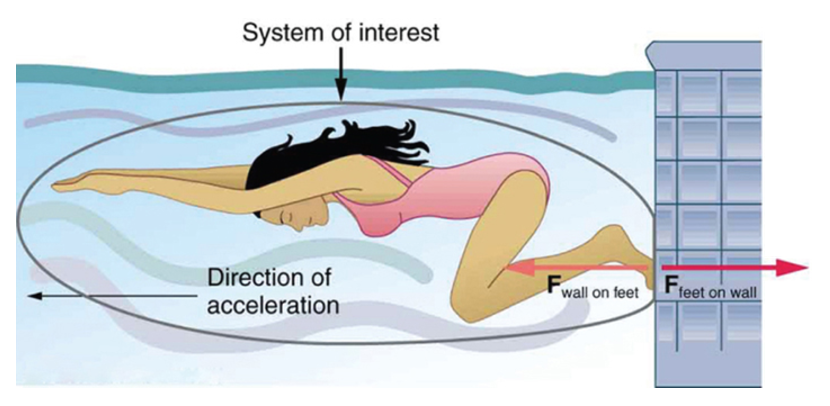a push or pull that one body/object exerts on another
force
For every action there is an equal and opposite reaction force
Newton's third law of motion
what force causes an object resist a change in motion and remain unchanged?
Inertia
Give one example of Newton's third law of motion
(teacher will decide whether team get the points)
the overall sum of all the forces acting on an object
net force
An object at rest will remain at rest and an object in motion will continue moving at with the same ______________ and ______________ unless acted on by an unbalanced force
SPEED and DIRECTION (also, Newton's first law ^-^)
Give one example of Newton's first law of motion
(teacher will decide if team gets the points)
 What force is considered the "reaction" in this example.
What force is considered the "reaction" in this example.
Action: Person's feet pushes off the wall
Reaction: Wall pushes back on person's feet
What happens if the net force acting on an object is zero
The object will not move/change
The acceleration of an object is directly proportional to the net force acting on it and inversely proportional its mass
Newton's 2nd law
An object that is still will only change if acted upon by an _______________.
unbalanced force
Consider the flying motion of birds. A bird flies by using its wings. The wings of a bird push air downwards, causing the bird to fly upwards. What is the action in this example?
the bird pushing air downwards
Two/more forces that are equal in size and acting in opposite direction
Balanced force
What are all of Newton's Laws Related to?
Motion
An object with a lot of inertia is likely to do what
Resist change
Newton's third law of motion states that forces always act in __________.
pairs.
How do you calculate Net Force
You find the overall sum of all forces acting on the object. (ADD the forces in the SAME direction...SUBTRACT the forces in OPPOSITE directions).
The acceleration of an object is ______________ proportional its mass.
Newton's first law is also known as __________________
The law of inertia
Newton's third law is also known as the law of _______________.
Action-Reaction